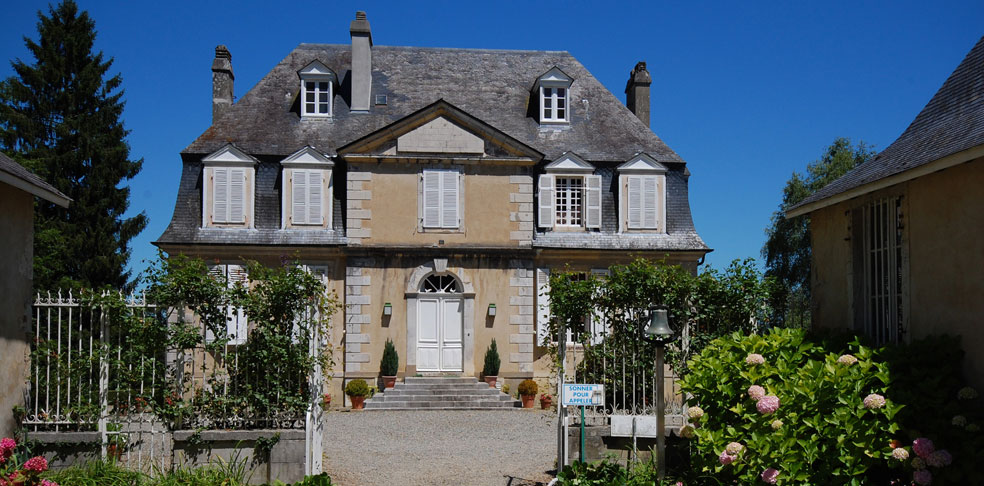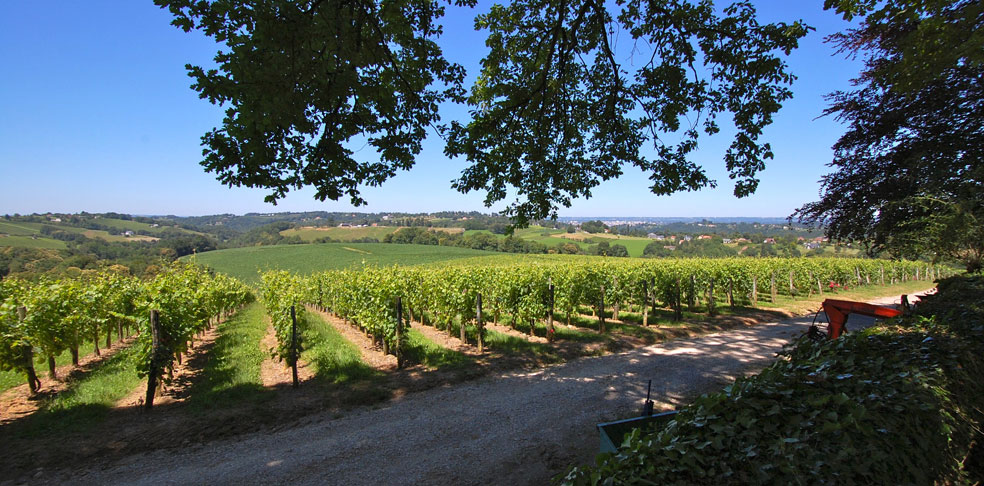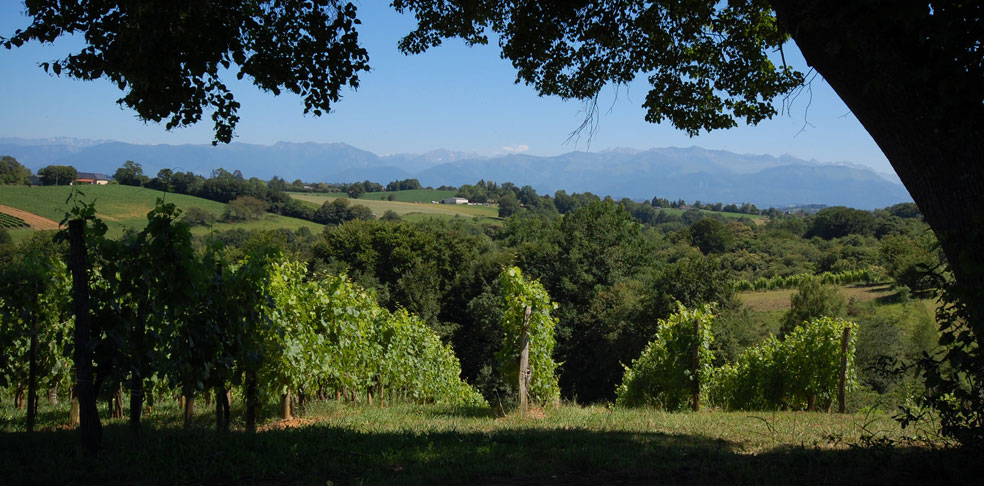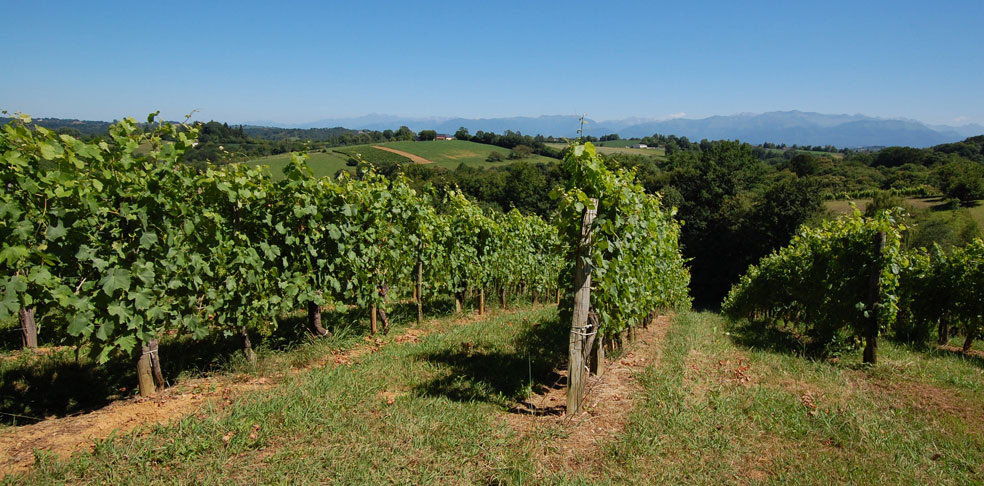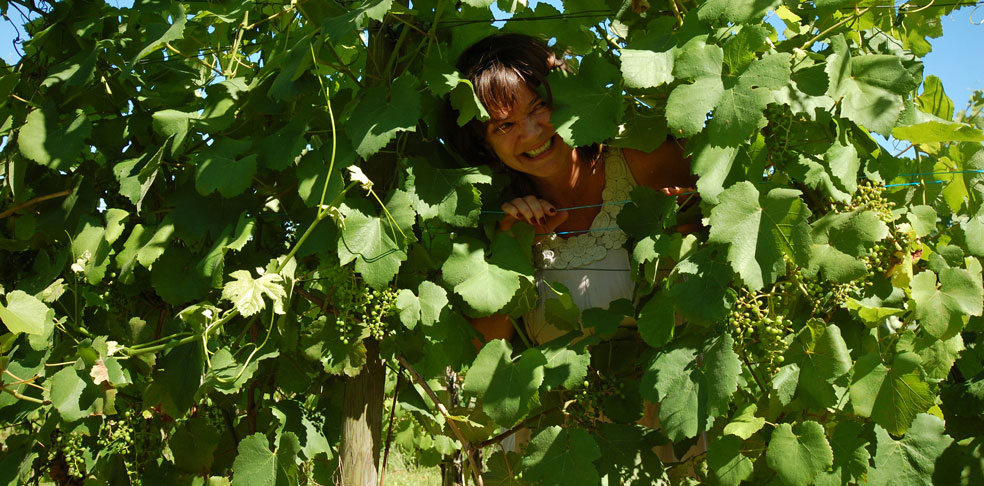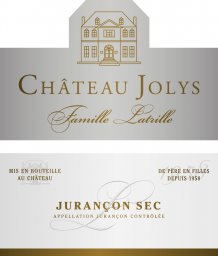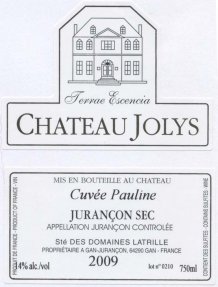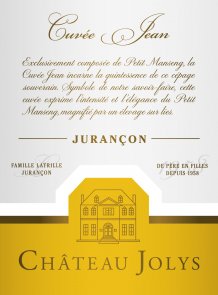Fanciful, voluptuous and wonderfully rounded – Château Jolys wines will take your senses to a higher level! Château Jolys, the biggest private estate in the Jurançon appellation, came into being in 1936.
The vines are planted on steep slopes that form large amphitheatres and offer a panoramic view of the majestic Pyrenees mountains. Our vineyards, home to our Petit Manseng and Gros Manseng grapes, lie on the hillsides of the well known Chapelle de Rousse terroir. They guide our gaze to the South, toward the peaks and the blue summits of the Pyrenees.
Here, Mother Nature is our ally; we have an unspoken agreement with her and we live and work hand in hand with her.
Our Jurançon wines are lively, crisp yet structured, thanks in part to the Chapelle de Rousse terroir, which is uncharacteristic of the Jurançon appellation.
Jurançon, the wine of kings and poets.
« In my youth I met a fiery prince, masterful and treacherous like all great seducers, like Jurançon wine »– Colette.
The first written references to Jurançon vines date back to 998. The Navarre royal court invested in the development of the Jurançon vineyards and this association lent a certain prestige to these wines. Indeed, Jurançon entered History on December 12th 1553, when this wine was used to anoint the baby King Henry IV at his christening.
The château dates from the 16th century and was renovated during the 19th century. This handsome period property, which may have been used as an observation post, is perched on a peak in the foothills of the Pyrenees, and despite its elegant appearance, is first and foremost a home where a warm welcome is always to be found. Two 18th century cellars stand either side of the courtyard; both house and cellars form the heart of the estate, and appear on all our labels.
From generation to generation
Pierre-Yves Latrille, an agricultural engineer, bought the estate over 40 years ago. The land was fallow, but he found the site so delightful, so peaceful, that he felt compelled to undertake the labour of love that transformed this wilderness into a 36 hectare vineyard, of which 3 hectares are given over to Chateau de Jurque.
His daughter, Marion Latrille, having obtained her diploma in viticulture and oenology, as well as a Masters degree in management, joined her father on the estate in 1999.
In 2012, his granddaughters Camille and Claire joined forces with him, bringing with them their energy, ideas and projects. Camille is in charge of the business and marketing side of things, while Claire looks after the vineyards and the winemaking.
To us, hand harvesting is essential; as far as we’re concerned it’s the best way to preserve the grape, from the vine to the vat. Our harvest period can last from mid October until the end of the first week of January!
Parcel selection allows us to determine and express the originality and characteristics of our wines.
Skin fermentation means that the grapes need to be in perfect condition; as my father is fond of repeating, ‘you can’t make good wine without good grapes’!
The Jolys terroir is a combination of several distinctive features:
- • high vine production (vine height 90cm minimum) because of the hardy mountainous climate (340m altitude); this helps reduce the risk of frost damage in Springtime
- • a mild Oceanic influence which softens the Pyrenean climate and provides more than enough rain (1400mm/year) to ensure the vines develop correctly
- • the Indian summer we have in the Béarn region, where from September to December sunny days and cool nights preserve the grapes from the moody Autumn weather
- • the Foehn wind, essential to the passerillage (drying) of the the gros and petit manseng grapes.
The Foehn reaches us from Spain, and from October onwards, the warm morning breeze it brings to the vineyards favours the concentration of the sugar and natural acids in our grapes, thus taking an active part in creating harmonious wines.
Passerillage (raisining): a cultural technique
We let our grapes dry on the vine; we harvest in several stages and leave the best bunches to surmature and turn brown at their own rhythm, still nourished by the vine; this is vital to us.
At Jolys, we see no reason to put up nets against the birds; we feel that if you respect Nature, nothing can go too far wrong! And anyway, the sparrows, wagtails, pipits, robins, bunting, red-backed shrike, serins and finches only pilfer a few bunches of grapes…
The Pyrenees pudding stones
When the Pyrenean mountain range was formed, the height of the plateau that bordered the Pyrenees was raised, thus leaving sparse soils with little lime, perfect for growing vines.
Our soils are rather diverse, with varying levels of silica and clay, and lots of morainic stones, known as pudding stones, due to rockslides during the formation of the Pyrenees.These are perfect vineyard soils, since they are sparse and enable the deep root development of the vines.
You can’t make a good wine without good grapes … especially when we carry out pre-fermentary maceration. My father always advised me to keep my eyes open and look around me, to observe the vines, how they evolve (strength, color), but also to keep in mind the big picture of what we want to do and how we want to do it.
Studying the vegetative cycle, treading the soil, smelling the buds from the vines, determining its strengths and weaknesses, its colour, anticipating in order to better protect, understanding that wine is made first and foremost in the vineyard, not in the cellar, accompanying it from the first leaves to harvest…..everything is visual, tactile, sensitive.
We are alert to Nature, to our terroir, and fiercely determined to relay the emotion that each vintage procures.

